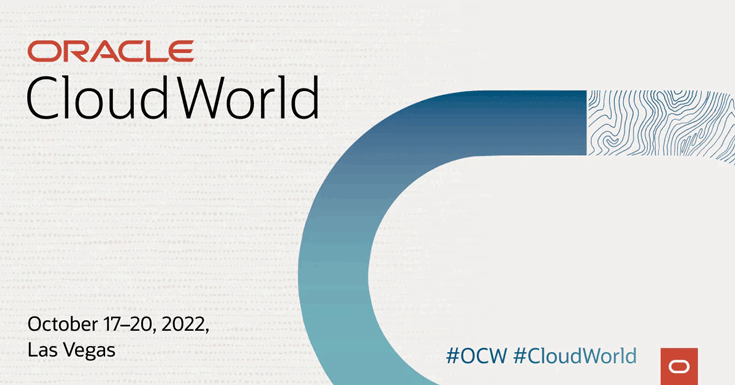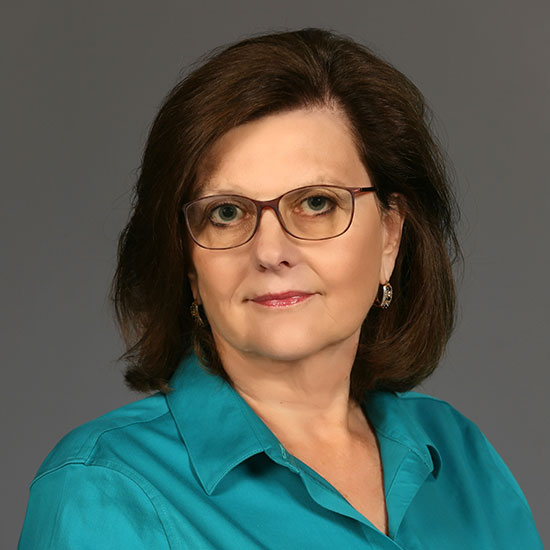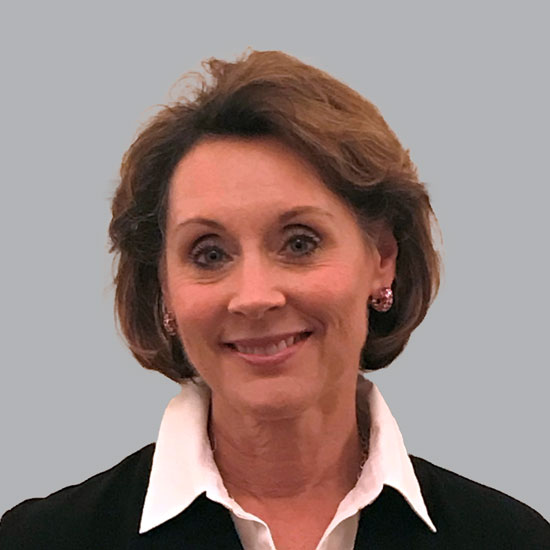Tambellini’s Key Takeaways from Oracle CloudWorld 2022
Principal Analyst
Former Analyst

For the first time since 2019, Oracle held its CloudWorld user conference live in Las Vegas, Nevada. Thousands of attendees met both in person and remotely to learn about the company’s strategic vision and latest announcements. While this year’s conference was notably smaller than those of previous years, with a more intimate feel, it was still quite large, with 1,200 sessions and 20 keynotes. There was also a marked difference in the tone of this event compared to previous Oracle user conferences, which can most likely be attributed to post-COVID human behaviors. Oracle’s response to the pandemic and global healthcare was front and center at this year’s conference.
Throughout the week, Oracle made many technical and functional announcements. The breadth of the company’s offerings continues to expand, and it has achieved a broad scale of innovation spanning cloud application frameworks, cloud infrastructure platforms, low-code development tools, autonomous databases, and world-class applications for a multitude of industries. Even its list of compliance programs is extensive, with support for the Americas, EMEA, and APAC.
A key differentiator for this year’s conference was that Oracle was visibly focused on customer issues, solutions, and success across various industries, including higher education, instead of just delivering innovative technology. For example, there was a strong emphasis on solving major issues related to global healthcare. The company made it clear that it is committed to delivering solutions that work toward improving health outcomes and reducing health management costs globally. In Larry Ellison’s keynote, he discussed lessons learned and outcomes that resulted from the COVID-19 pandemic. He also talked about the v-safe vaccine management application that Oracle created for the CDC. Oracle’s healthcare announcements have enormous global potential. If Oracle can solve for data issues, connectivity, and accessibility of healthcare data at a global level, the implications for higher education and the world are profound.
Oracle’s latest innovations can be summarized by a few key words: “open,” “autonomous,” “automation,” “security,” and “partners.” Oracle is supporting open systems, system interoperability, and the highest security standards globally. It is also increasing its investments in industry strategy. The goal is to drive customer momentum in micro-industries, leverage Oracle industry applications, and extend functional breadth and depth in key industries.
During the conference, Oracle revealed many new technology and application innovations, some of which are higher education related.
Higher Education Innovations
Oracle reaffirmed that higher education is a key industry for the company and recognized that higher education plays a significant role in addressing real-world issues. The company is making a significant investment in the development of a cloud-native student system that is being built from the ground up. Oracle Student Cloud is on track to be delivered as planned in fall 2023. Development teams have been making impressive progress, and institutions can begin planning go-live dates for as early as 2025.
Oracle continues to expand the footprint of its Student Financial Planning (SFP) solution across higher education. To date, more than 30 US institutions have selected Oracle SFP and are either live or in the process of implementing the solution. Client feedback has been positive on SFP, and billions of dollars of financial aid have been processed using it. Oracle also confirmed future support for institutional methodology (IM), which is the result of a partnership with the College Board.
While Oracle has many implementation partners to support Oracle Fusion Cloud ERP, HCM, and Payroll, it so far has four authorized partners to implement Oracle Student Cloud, including Deloitte, Drivestream, Huron, and Sierra Cedar. These partners are very different from one another, and each one provides a range of options for institutions. Stay tuned to Tambellini’s publication calendar for more detailed information on Oracle Fusion Cloud partners.
In addition to higher education-specific announcements, Oracle shared information about a number of other innovations.
Cloud Evolution and Open Multi-Cloud Ecosystem
Oracle is committed to supporting an open multi-cloud ecosystem that allows users to leverage multiple cloud providers (OCI, AWS, Azure, Google). Larry Ellison’s keynote referred to this capability as an “internet of clouds.” To that end, Oracle has partnered with Microsoft to deliver (free) Oracle and Microsoft Multi-Cloud Interconnect, which allows users to seamlessly transcend Oracle Cloud Infrastructure (OCI) and Azure cloud services to, for example, run applications in Azure that access an Oracle database deployed on OCI. Oracle’s cloud services portability has applicability in higher education, allowing leading-edge databases such as MySQL HeatWave to be deployed using non-Oracle cloud services such as Azure via Oracle MySQL HeatWave for Microsoft Azure. This service is generally available and allows customers to use AWS and Oracle from the same console and interconnect database and applications across cloud services.
Oracle announced a new cloud infrastructure platform called Oracle Alloy that allows service providers and partners to become cloud providers and deliver branded and custom cloud services that leverage the OCI cloud services platform. Oracle Alloy presents many possibilities for the higher education market, allowing leading higher education services firms to develop and offer cloud applications.
Application Automation
Automation is another area of focus for Oracle innovation, as the company’s goal is to deliver next-generation systems across all industries. Instead of automating one segment of an industry, Oracle is taking a more aggressive approach, to automating entire ecosystems. This vision will leverage the company’s support of open multi-cloud infrastructure. As part of this mission, Ellison spoke about Oracle’s huge investment in life sciences and healthcare and building a national (and global) public health electronic records database.
During the conference, Oracle detailed its plans to execute on its vision. Automation will be touchless, predictive, and collaborative. To support the touchless automation of manual work, Oracle announced a new B2B Commerce solution with several partners. The solution will automate processes from point of purchase through expense reimbursement without any user input. Oracle is partnering with J.P. Morgan Payments Solutions and FedEx in using its newly launched B2B Commerce solution in conjunction with Oracle Fusion Cloud ERP to automate and simplify customer transactions (purchasing, selling, financing, shipping, billing, and making payments), making it easier and less expensive to execute banking and logistics services.
As Oracle delivers automated industry applications, it acknowledges that partnerships are essential. Ellison stated that, as Oracle and the world move into uncharted technological territories, no one company possesses all the necessary expertise or answers ─ especially across functional areas ─ so they will need to rely on partnerships to design and build functionality on top of core platforms. Thus, open platforms are imperative to facilitating innovation.
Oracle Cloud Infrastructure Application Development
Oracle has also announced expanded support for OCI application development, including developer services for building cloud-native applications, pre-trained AI, data services, and low-code development. These enhancements are designed to facilitate development and operations of modern cloud applications, such as OCI Queues for serverless communications and messaging, container runtime options (Oracle Container Engine for Kubernetes and Container Instances), and OCI Workflow Orchestration for reusable automation flows and application logic.
Data Analytics
Oracle announced a series of enhancements across its Oracle Fusion Analytics solutions for ERP, HCM, SCM, and CX. This family of products is based on prebuilt, cloud-native analytics for Oracle Fusion Cloud applications that use embedded machine learning. Oracle is delivering a prebuilt library of best-practice KPIs, dashboards, and reports to monitor performance goals that will allow business users to be more self-reliant.
Oracle is also delivering several enhancements for the Oracle Analytics Cloud, including a semantic modeler, advanced composite visualizations, and new AI/ML functionality.
Conclusion
Overall, Oracle continues to deliver new and innovative products and capabilities. Several of its recent announcements (Oracle Alloy and OCI application development) offer the partner community an opportunity to deliver industry-specific cloud applications and possibly provide deployment alternatives for higher education system offices and consortiums. Oracle’s B2B Commerce has the potential to revolutionize the financial services industry, which essentially has a downstream effect on all industries. Last but not least, Oracle ─ which is now comfortable in its own shoes – has shifted its mindset and focus from delivering innovative technology to delivering solutions that address customer issues in an open, secure, automated, reliable, simpler, and more cost-effective ways.
In the higher education space, Oracle’s Student Financial Planning solution provides another positive reference point for what is to come in Oracle Student Cloud.
Oracle’s Student Cloud solution continues its progression toward general availability. Institutions can begin planning for implementation now, configuring in 2023 and going live in 2025 if milestones continue to be met. Excitement and enthusiasm are building as anticipation turns to reality for Oracle’s solution to empower institutions to deliver next-generation experiences and outcomes for students.
Vicki Tambellini attended Oracle CloudWorld as an analyst and participated in the analyst track, including private briefings with Oracle executives.
Categories
Share Article:

Additional Authors:

Other Posts From this Author:
© Copyright 2025, The Tambellini Group. All Rights Reserved.